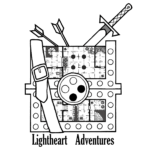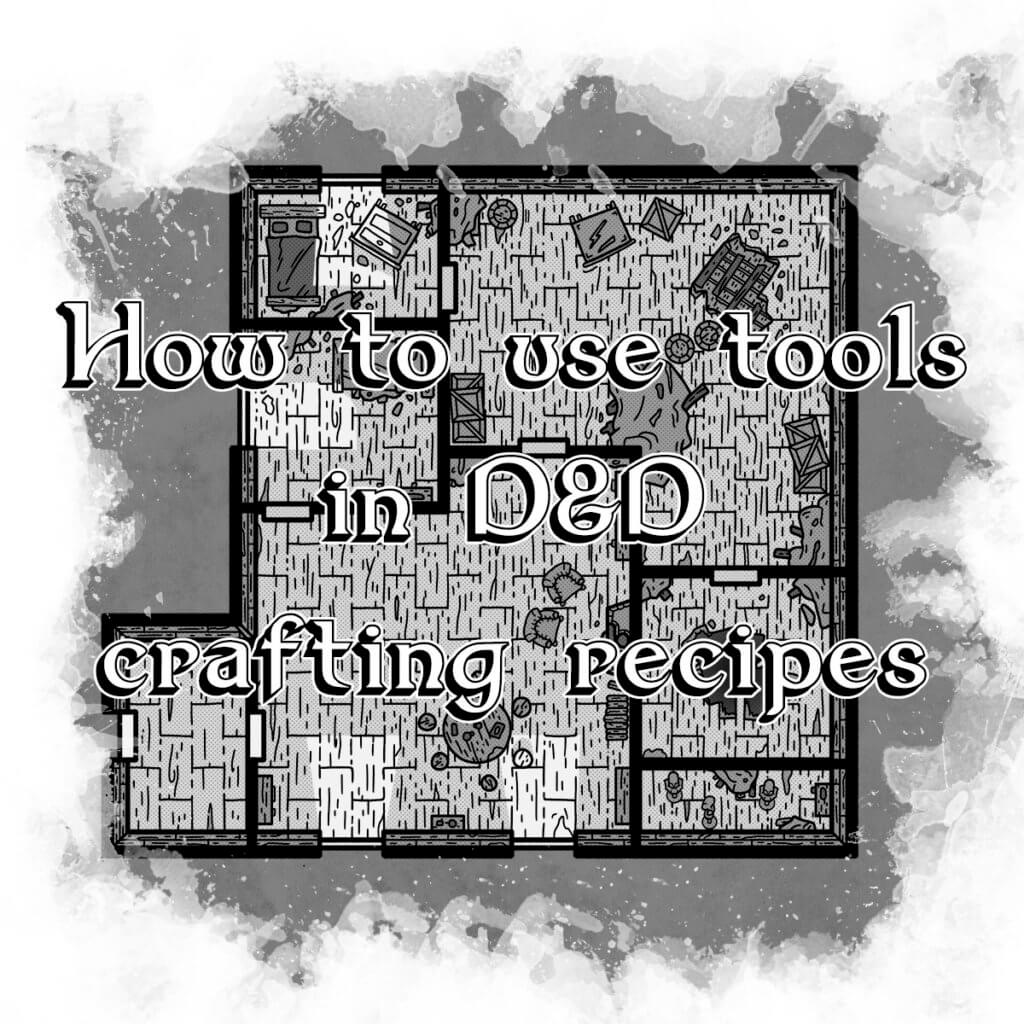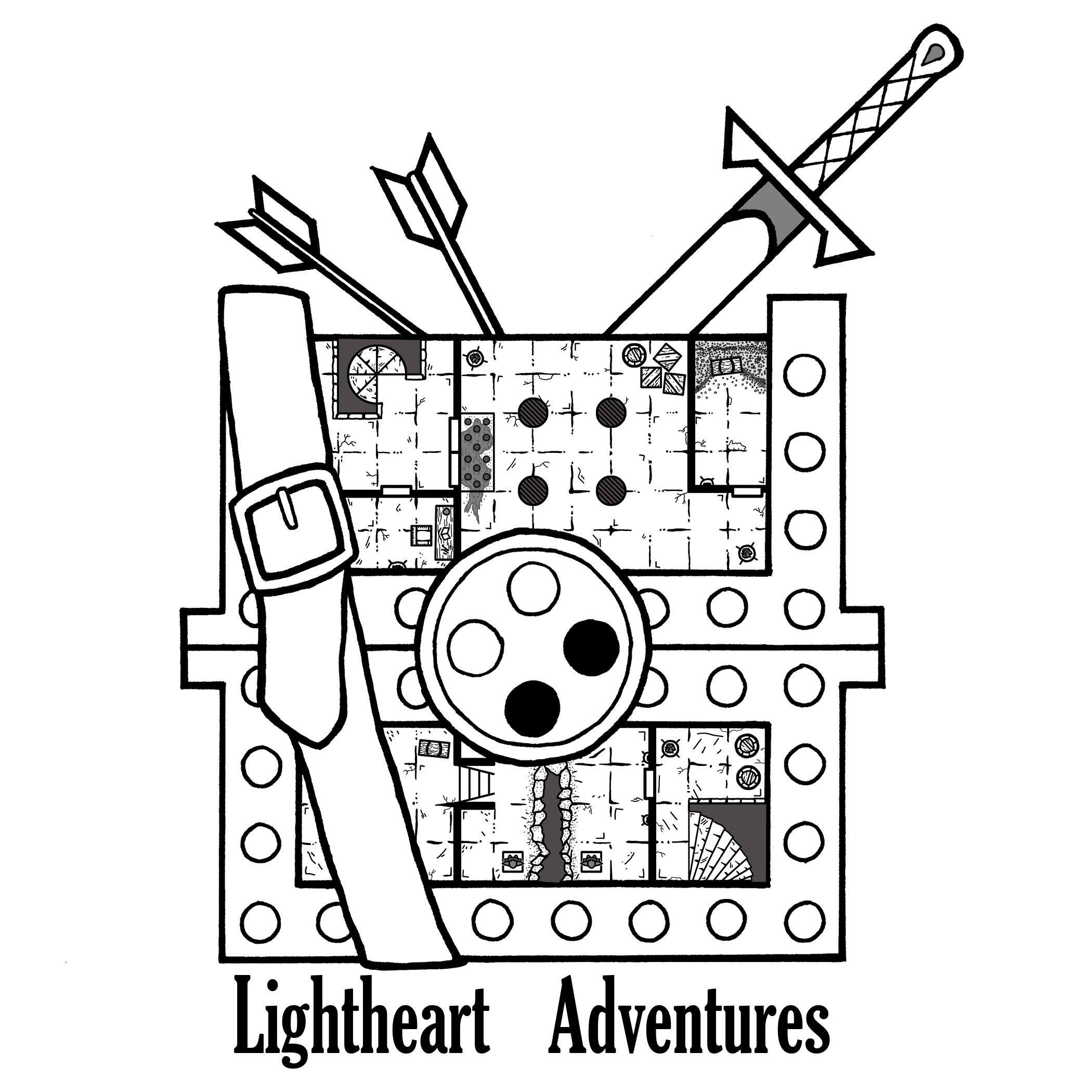I tend to forget about tools and tool proficiencies whenever I play D&D, both as a player and as a DM. Rarely does a chance occur to use tools during a session, unless someone has a set of thieves’ tools or a musical instrument. My artificer owns three different sets of tools, and I can barely count on one hand the times I’ve needed to use any of them. Xanathar’s Guide has a section on crafting as a downtime activity, but the crafting options presented are woefully limited. The crafting an item section suggests a handful of crafting options, but limits the tools to just four kits, and offers nothing for lesser-used tools. Because of this dearth of options, I’m writing a catalogue of crafting recipes for all of the different tools available in the Player’s Handbook! Today’s post is a quick tutorial on how to use tools in D&D as well as a brief peek at the crafting recipes that’ll soon be available on DriveThruRPG for players and DMs alike to make when between adventures.
Disclaimer: This post contains affiliate links, meaning we may receive a small commission from qualifying purchases if you click on our links, at no additional cost to you. As Amazon affiliates, we may earn from qualifying purchases. You can see our full disclosure here. Thanks for supporting your favorite dungeon artists!
How to use tools in D&D crafting recipes
During the course of a character’s life, they often acquire proficiency in a set of tools. This can be during character creation, or as part of a class advancement reward. A DM might even reward tool proficiency if a character spends enough time training with the tools. Once a character has a tool proficiency, they can add their proficiency modifier to any skill checks relating to the tools at hand. For example, fixing a pair of worn shoes is easier with a set of cobbler’s tools, or brewing chemicals can be done with alchemist’s supplies. Tool proficiency adds an extra layer to make characters feel like they’re living beings that have skills other than slaying goblins and exploring dungeons.
As I mentioned above, Xanathar’s Guide has a few suggestions on how to create goods. This list includes using a herbalism kit, leatherworker’s tools, smith’s tools, and weaver’s tools, but leaves out the other 14+ toolkits. I don’t know about you, but I think potter’s tools and glassblower’s tools need a little more love! That’s why I’m making a recipe catalogue full of magical and mundane items for all tool sets.
The following D&D crafting recipes use the tools listed on page 154 of the Player’s Handbook. Each recipe can be made by a single individual, though if another character wishes to aid in the building process, the crafting DC is made with advantage. The section below describes each category for a recipe.
Name (Name of the item being created)
Toolkit (Toolkit required to create item)
Crafting difficulty (DC and attribute needed to create the item)
Materials (materials and cost to create item)
Time (Time needed to create an item)
Cost (Amount item sells/buys for)
Description (item’s description)
Extra (any extra information about the item)
Rotgut Liquor
- Name: Rotgut liquor
- Toolkit: Brewer’s supplies
- Crafting difficulty: DC 12 Intelligence check
- Materials: 2 silver worth of hops, barley, sugar, and water (or other similar liquid) per one bottles’ worth of brew
- Time: One month
- Cost: One bottle sells for 4 silver
- Description: Rotgut is truly the drink for the desperate. Often brewed in less than sanitary conditions, this hard liquor is the one consumed by those down on their luck due to its availability and cost. Any creature that consumes a bottle of rotgut must succeed on a DC 12 Constitution saving throw or be poisoned for one hour.
- Extra: Succeeding on the crafting DC by 5 or more doubles the total amount of the liquor brewed.
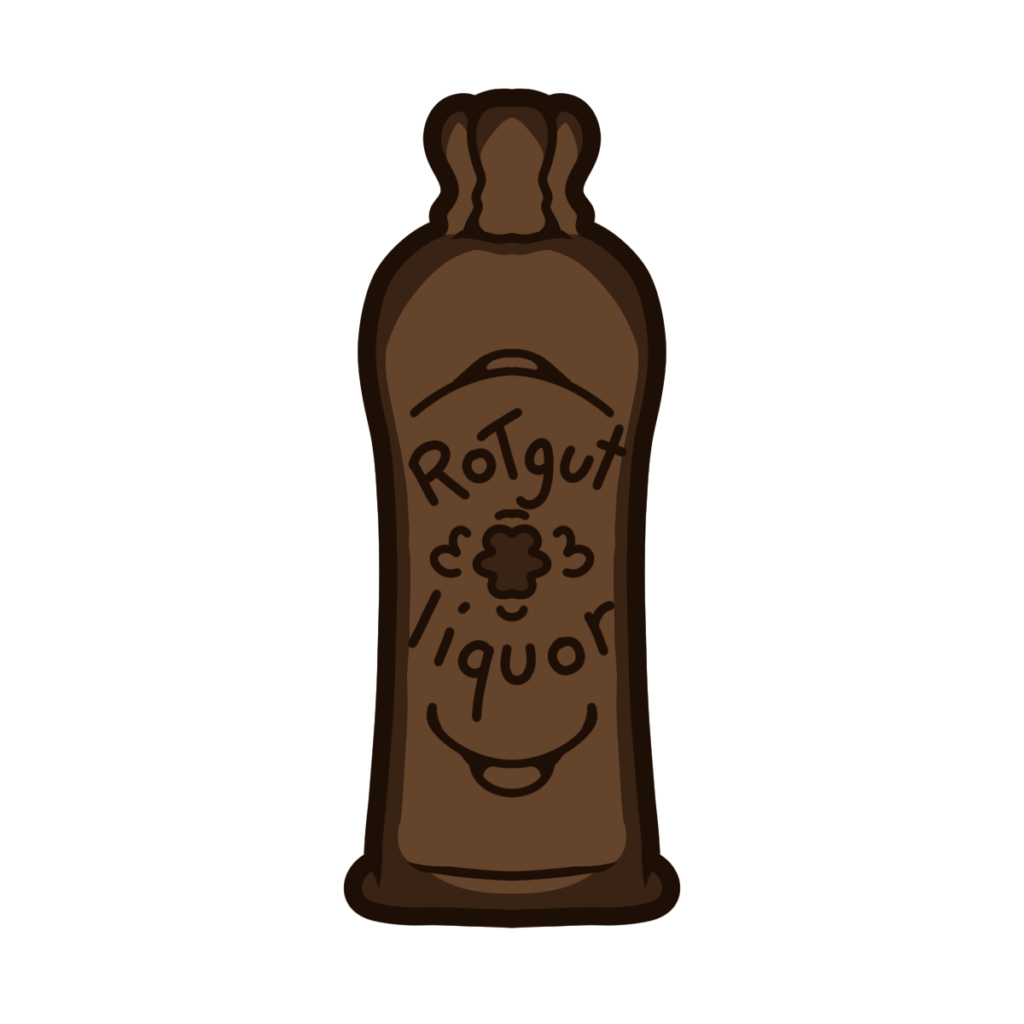
Reverse boots
- Name: Reverse boots
- Toolkit: Cobbler’s tools
- Crafting difficulty: DC 15 Dexterity check
- Materials: 50 gold worth of leather, rubber, and various metal parts per pair
- Time: One week
- Cost: One pair sells for 100 gold
- Description: These unique boots look ordinary upon first glance, but their soles hide a useful trick. The wearer can reverse the soles to face the opposite direction and potentially lead any followers on a different path. As a bonus action, the wearer can reverse the soles of the boots to increase the DC to track the wearer’s footprints by 5.
Fake Ring
- Name: Fake ring
- Toolkit: Jeweler’s tools
- Crafting difficulty: DC 18 Dexterity check
- Materials: 2 gold worth of metal and glass per ring
- Time: One day
- Cost: One ring sells for 4 gold of actual value, or up to 500 gold if not inspected clearly
- Description: It takes a surprising amount of talent to make something look like its worth more than the sum of its parts. With a little bit of brass, polish, and charm even the cheapest quality ring can be sold to high-end buyers. Just make sure that you’re out of town before the new owner realizes what they purchased. The ring looks like the genuine article, though a DC 16 Intelligence (Investigation) reveals it for the low quality jewelry that it is.
- Extra: Succeeding on the crafting DC by 5 or more increases the Intelligence (Investigation) DC by 3.
Metal Repair Kit
- Name: Metal repair kit
- Toolkit: Smith’s tools
- Crafting difficulty: DC 15 Strength check
- Materials: 15 gold worth of spare metal, polish, and adhesives
- Time: One day
- Cost: One kit sells for 30 gold
- Description: This small selection of seemingly random metal chunks is often the most useful tool in an adventurer’s pack. With a little bit of pressure and chemicals, the kit can be used to shore up deficiencies in metal armor and weaponry after a prolonged fight, or reinforce metal structures before an onslaught. One kit can repair 1d6 of cumulative damage applied to metal weapons and armor, or increase a metal object or structures’ hit points by 2d10. This repair takes 30 minutes to complete, and can be done during a short or long rest.
- Extra: Succeeding on the crafting DC by 5 or more creates a second metal repair kit at no additional cost.
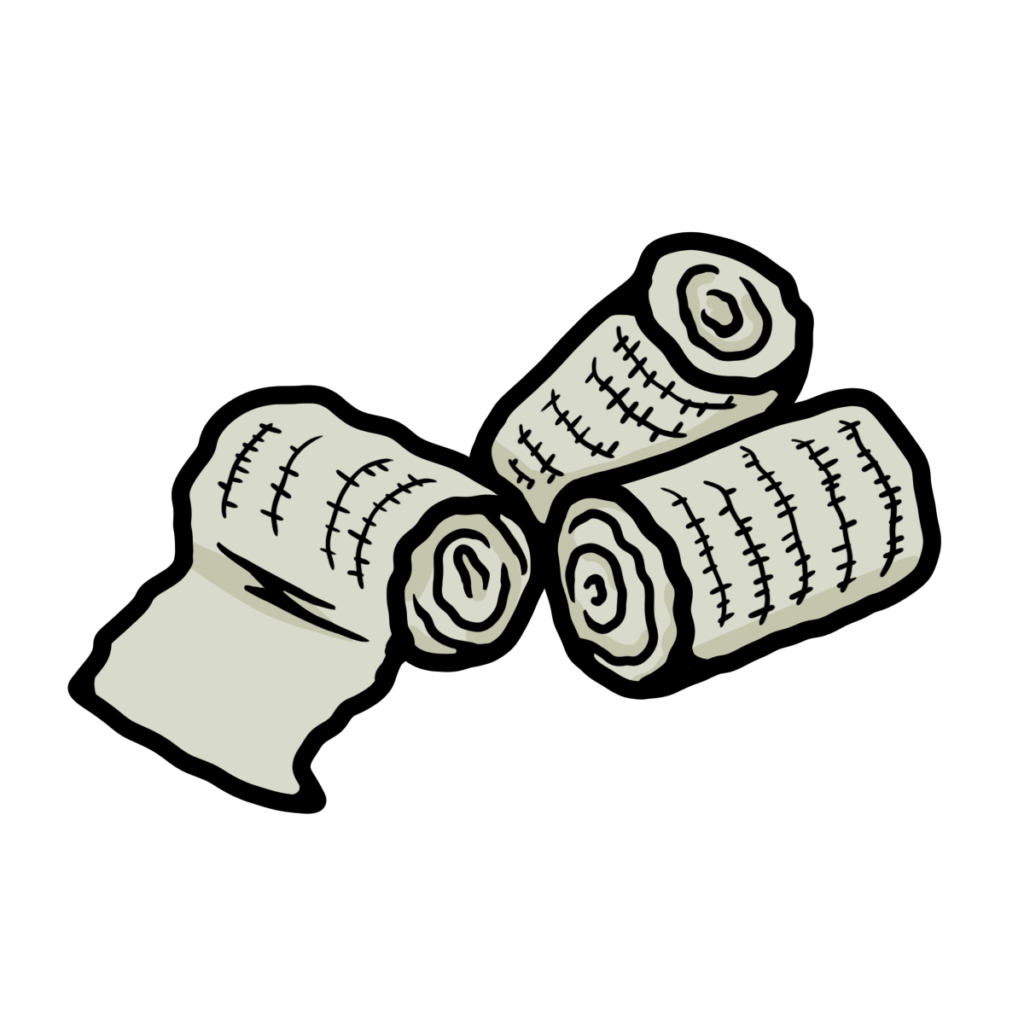
Treated Bandages
- Name: Treated Bandages
- Toolkit: Herbalism kit
- Crafting difficulty: DC 15 Wisdom check
- Materials: 3 gold worth of clean cloth, alcohol, and medicinal herbs
- Time: 4 hours
- Cost: One set of bandages sells for 6 gold
- Description: These cleansed bandages have been soaked in a curative blend to expedite the healing process when applied to wounds. A character may apply a set of bandages during a short rest to heal a number of hit points equal to 1d6 + Constitution Modifier. Only one bandage may be applied per short rest.
- Extra: Succeeding on the crafting DC by 5 or more creates a second set of bandages at no additional cost.
Wrap up
That was a taste of but a few of the unbelievable D&D crafting recipes coming pretty soon from Lightheart Adventures! I’ve got plenty of items brainstorming, and I can’t wait to get them ready for you all to see. Are there any toolkits that you think need a little more love? If so, be sure to tell us on Twitter, Facebook, Instagram, or Discord! If you’d like access to more maps and content, including downloadable PDFs of our adventures, check out our Patreon. We’re able to do what we do because of all our amazing Patrons!
